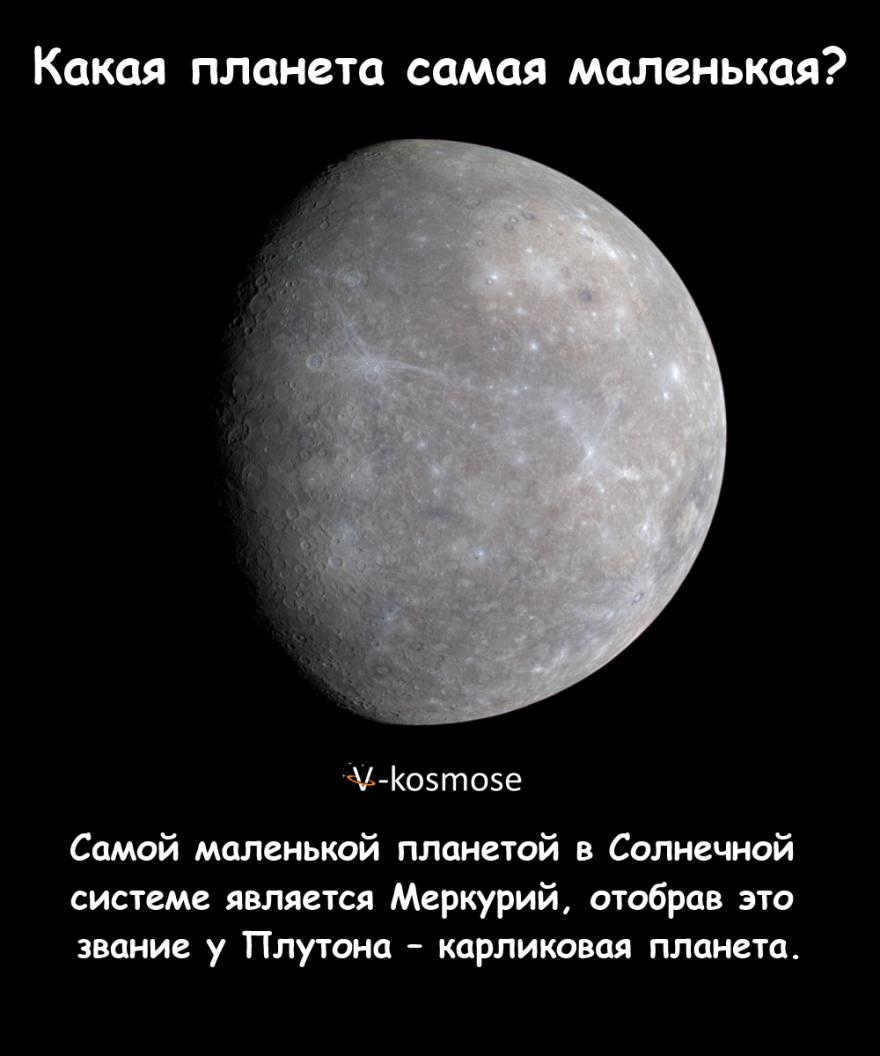
Mercury, which took the title of the smallest planet in the solar system from Pluto, a dwarf planet, is known for its petite size.
Within our solar system, there exists a wide range of planets, including those in the Earth group, gas giants, and ice giants. When it comes to identifying the tiniest planet, there is often debate. Some individuals still argue that Pluto holds that distinction. However, in 2006, Pluto was reclassified as a dwarf planet, making Mercury the officially recognized smallest planet within our solar system.

The dimensions and weight of the tiniest planet in our planetary system
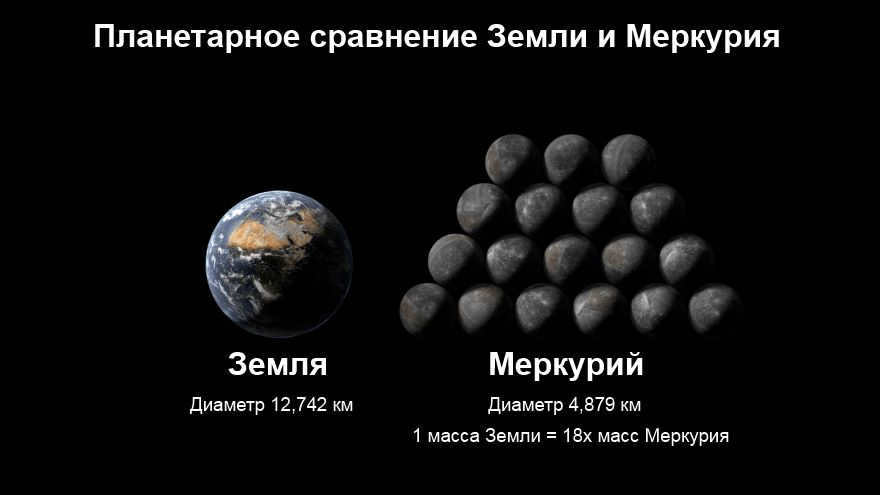
A comparison between the planet Mercury and the Earth
Mercury, which has a radius of only 2440 km (0.38 times the radius of the Earth), is a nearly spherical celestial body. While it is smaller than its satellites Ganymede and Titan, it is actually more massive. Specifically, Mercury has a mass of 3.33 x 10 23 kg.
Mercury is the second densest planet in the Solar System, after Earth, with a density of 5.427 g/cm 3 . The gravity on Mercury is 3.7 m/s 2 , which is 38% of Earth’s gravity. The volume of Mercury is 6.083 x 10 10 10 km 3 , equivalent to 0.056 times the volume of Earth. This means that it would take 20 Mercury planets to fill the same volume as one Earth.
Composition and Structure of the Smallest Planet in the Solar System
Mercury is similar to Earth in terms of composition, with a combination of silicate materials and metals. The planet consists of a metallic core, a silicate mantle, and a crust. The core of Mercury has a radius of 1800 km, which makes up 42% of the planet’s volume. More details about the structure and composition of Mercury are provided below.
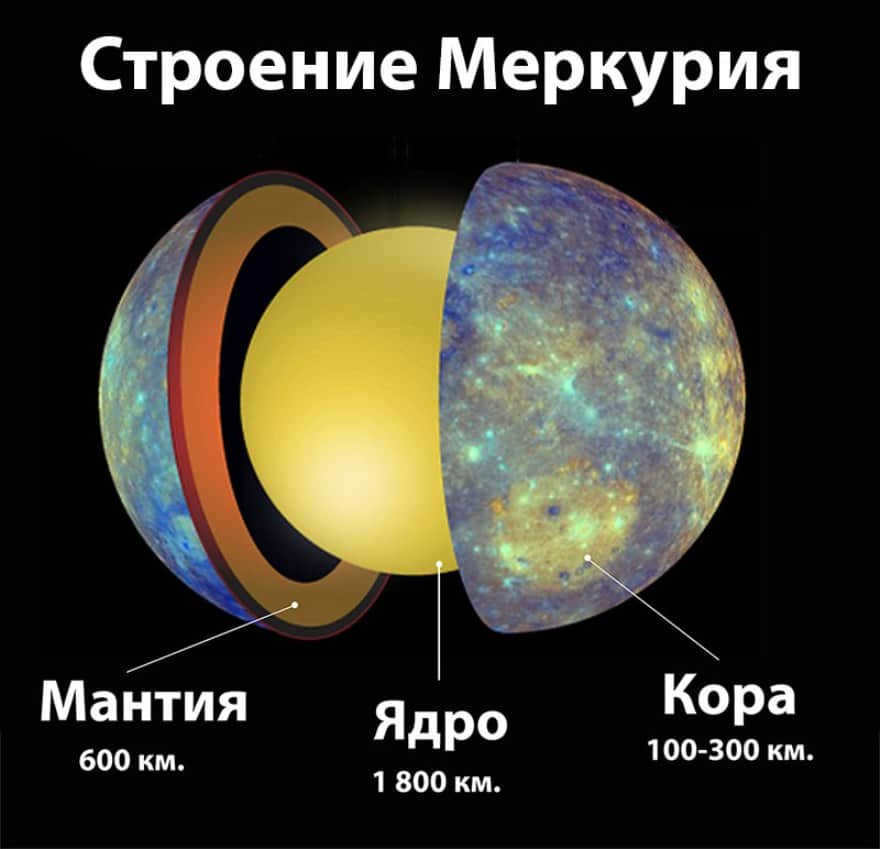

Mercury’s internal composition consists of three main layers: the crust, mantle, and core.
The core is particularly notable for its high concentration of iron. It is speculated that the planet was once much larger, but a powerful impact event caused the erosion of its upper layers. Following the core is the mantle, composed of silicate material and measuring 500-700 km in thickness, and finally, the crust, which ranges from 100 to 300 km in depth.
While Mercury may be the smallest planet in our solar system, it surpasses the others in terms of density and temperature.
- Curious planetary facts;
- The tiniest planet;
- The largest planet;
- The most distant planet;
- The planet closest to Earth;
- The hottest planet;
- Planetary orbits;
- Planetary dimensions;
- Planetary diameter;
- Number of planets in the solar system;
- Order of the planets;
- Former planets of the Solar System;
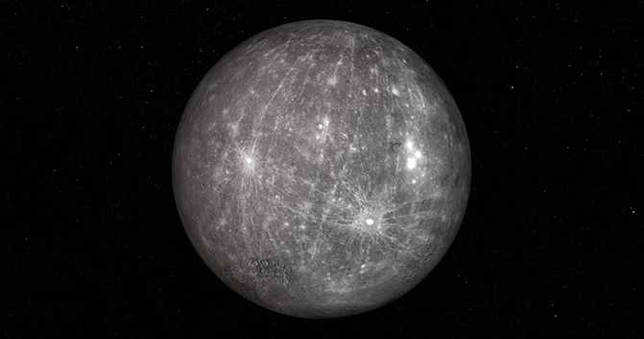
Currently, astronomers have knowledge of 8 celestial bodies within the solar system.
The tiniest planet in the solar system
The smallest planet, known as Mercury, has a radius of 2,439 km (or a diameter of 4,879 km, equivalent to 3,031.9 miles). At one point, Mercury lost its title as the smallest planet after the discovery of Pluto in 1930, which is even smaller. However, in 2006, Pluto was reclassified as a dwarf planet, allowing Mercury to regain its status as the record holder.
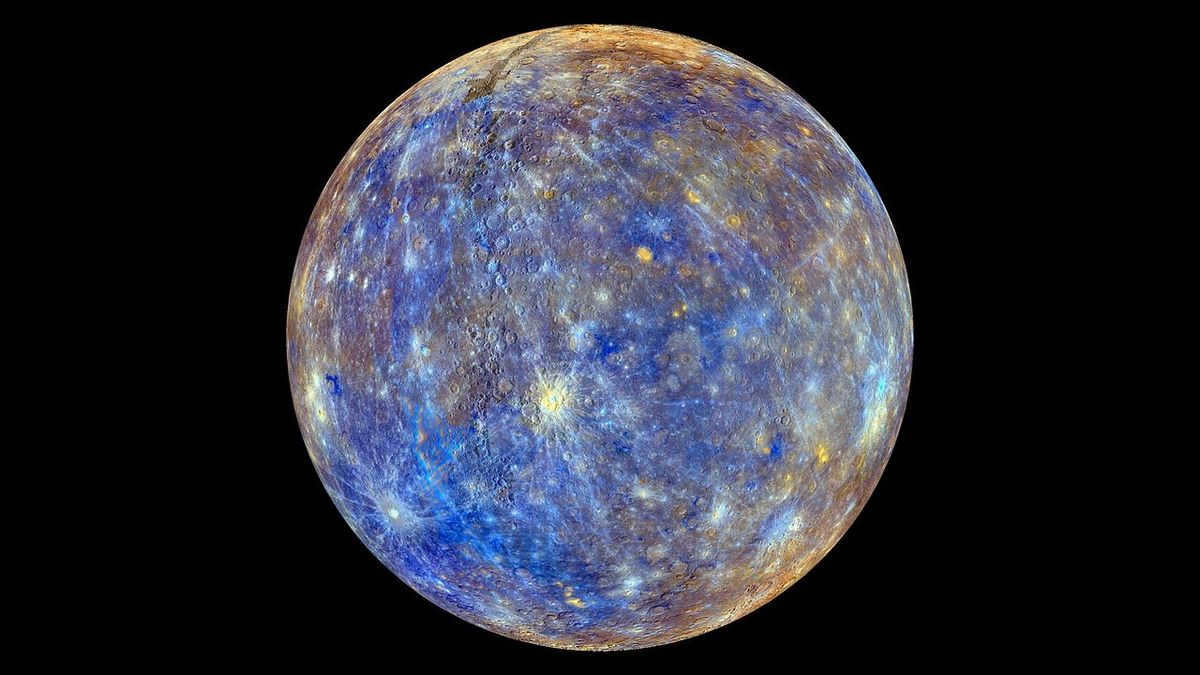
Mercury is incredibly tiny, to the point where it is even smaller than its two moons, Ganymede (which is part of Jupiter) and Titan (which orbits Saturn). However, in terms of weight, Mercury still surpasses them due to its composition of denser materials.
Due to its minuscule size, Mercury has virtually no atmosphere. In theory, it does exist, but the pressure is 500 billion times lower than Earth’s pressure, which is measured at 1 atmosphere. Consequently, Mercury’s atmosphere can be classified as a vacuum.
The biggest planet in our solar system
Jupiter holds the title as the largest planet in the solar system, boasting an impressive estimated radius of 69,911 km (or a diameter of 140,000 km/86,881 miles). In terms of volume, it is a whopping 1,320 times larger than Earth and 318 times more massive. Jupiter falls into the category of giant planets, which sets it apart from Earth-like planets. One fascinating aspect to note is that Jupiter lacks a solid surface!
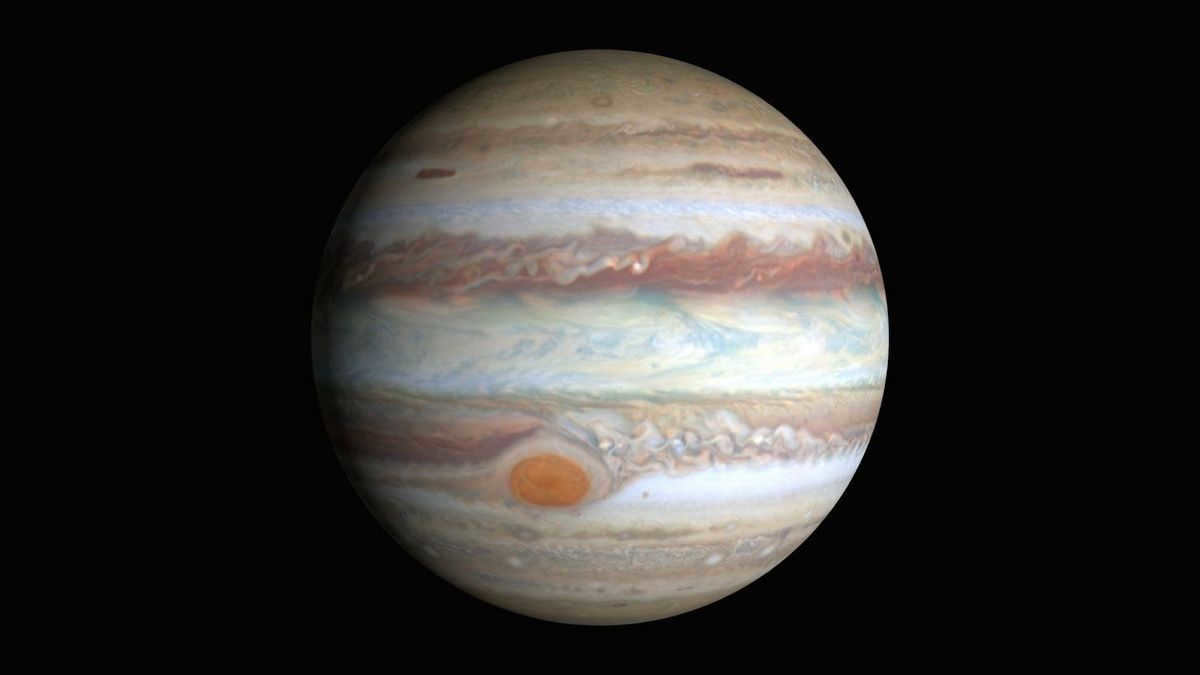
It is worth noting that the majority of Jupiter is comprised of its atmospheric composition. As one approaches the planet’s core, the atmosphere gradually becomes denser and the pressure intensifies. Consequently, at a specific depth, the gaseous atmosphere transitions into a liquid state; however, unlike Earth, there exists no distinct demarcation between the ocean and the atmosphere.
Which planet has the highest number of satellites and rings?
The number of satellites varies among the giant planets. Jupiter has a total of 79 satellites, while Saturn has 82 satellites. In comparison, among the earth-like planets, Mars has only two satellites, although their size is relatively small, not exceeding 30 km in diameter. On the other hand, Ganymede, one of Jupiter’s moons, has a diameter of 5268 km.
In addition to satellites, all giant planets have ring systems. The discovery of rings initially occurred with Saturn in 1655. However, the rings of the other giant planets (Jupiter, Uranus, and Neptune) were not discovered until the 70s and 80s of the 20th century, largely thanks to spacecraft missions that flew in close proximity to these planets.
The Most Scorching Planet in the Solar System
It is evident that as a planet gets closer to the Sun, its temperature increases. Therefore, one would assume that the hottest planet in the solar system is Mercury, being the closest to the Sun. However, this assumption is incorrect! While the temperature on Mercury can rise to +427°C in the sun, it can also plummet to -193°C in the shade. Interestingly, even though Mars is four times farther from the Sun than Mercury, its temperature does not drop to such extreme lows. The true record holder for the most scorching planet is Venus, where the temperature remains a scorching 464°C both in the shade and in the sun. This anomaly can be attributed to the planet’s unique atmospheric composition.
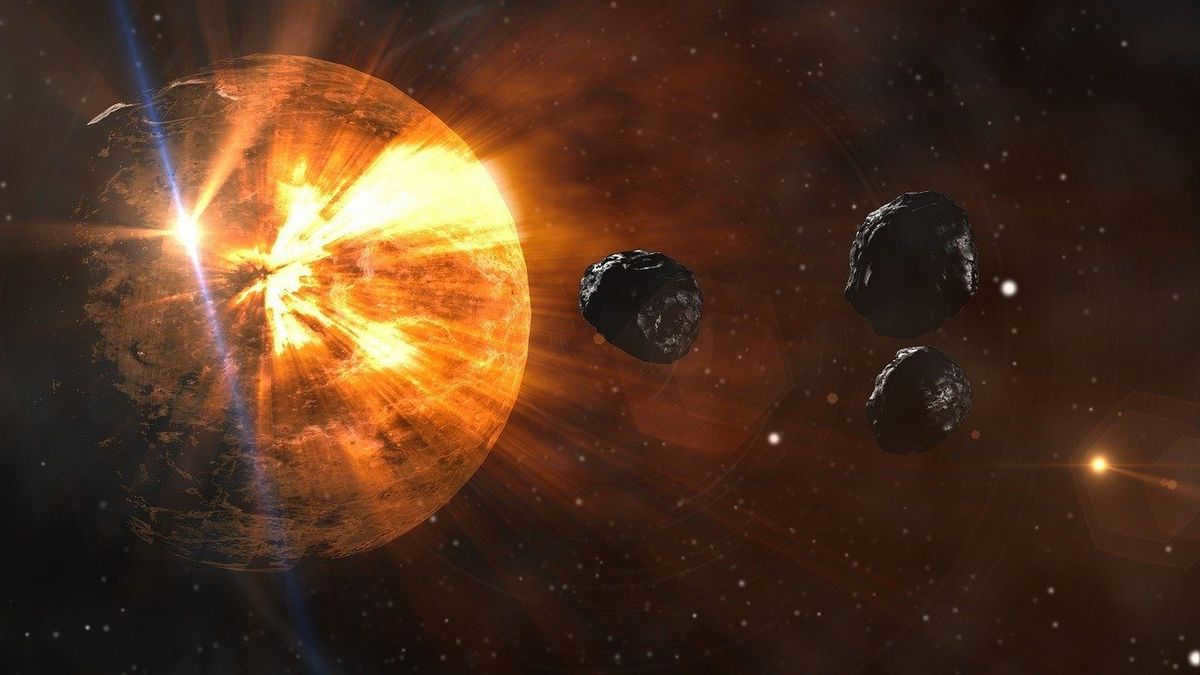
The reason behind this peculiar phenomenon is that Venus possesses an incredibly dense atmosphere, with surface pressure reaching 100 times that of Earth. This makes it equivalent to the pressure exerted by water at a depth of 900 meters. On one hand, such a dense atmosphere, primarily composed of carbon dioxide, generates a potent greenhouse effect, resulting in the planet’s extreme heat.
On the other hand, the atmosphere effectively redistributes heat across both the illuminated and unilluminated regions of Venus, ensuring uniform warming. In contrast, Mercury lacks a significant atmosphere, eliminating any greenhouse effect and a mechanism for heat redistribution between its “hot” and “cold” hemispheres.
Order of the planets
The arrangement of the planets within our solar system has undergone changes over time. In its early stages, Neptune was actually situated closer to the Sun than Uranus. However, the gravitational forces exerted by Jupiter and Saturn caused Neptune to gradually move away from the Sun, resulting in a switch of positions between Uranus and Neptune. Neptune’s relocation was ultimately completed upon its collision with the Kuiper Belt, which is an additional asteroid cluster located within our Solar System.
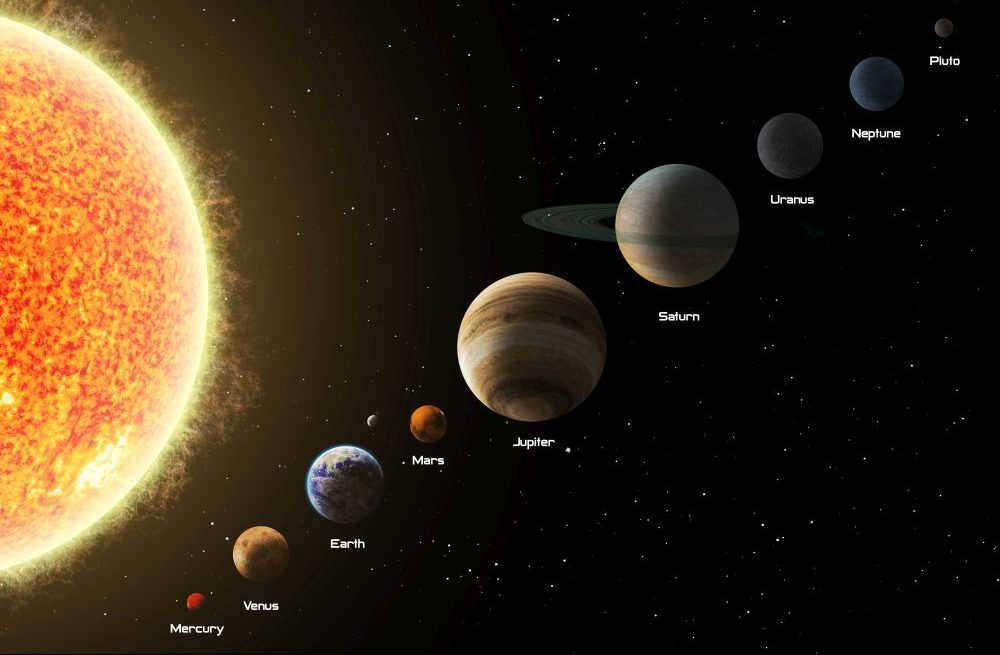
Currently, the sequence of planets in our solar system starting from the Sun is as follows: Mercury, Venus, Earth, Mars, Jupiter, Saturn, Uranus, Neptune, and the dwarf planet Pluto.
A fascinating occurrence takes place on Jupiter and Saturn – showers of diamonds. This extraordinary phenomenon is a result of the presence of methane clouds in their atmospheres. When lightning traverses through these clouds, carbon particles, or soot, are generated and descend towards the planet’s core.
As the atmosphere becomes denser, the carbon undergoes increased pressure and transforms into graphite before eventually crystallizing into diamonds. It is estimated that Saturn experiences an annual diamond precipitation of approximately 1000 tons.
Interesting Patterns and Anomalies in the Rotation of Planets
When it comes to the rotation of planets, there are some fascinating patterns and anomalies worth noting. It is widely known that all planets orbit the Sun in a consistent direction and almost in the same plane, known as the ecliptic plane. Additionally, they all rotate on their own axis in the same direction. However, there are two notable exceptions to these trends: Venus and Uranus.
Venus stands out from the rest as it rotates in the opposite direction compared to other planets. This unique characteristic sets it apart from its celestial neighbors.
On the other hand, Uranus presents an intriguing anomaly. Its axis has an inclination of approximately 90 degrees, causing its rotation to be significantly different from that of other planets. As a result, nearly the entire surface of Uranus, excluding a narrow equatorial strip, experiences either a polar day or a polar night. This means that in these regions, the transition from day to night occurs only once every 42 years!
Mercury and Venus have a noticeable distinction in their rotation characteristics. The planet Mercury takes an astonishingly long time to complete one rotation around its axis, requiring a whopping 58,646 Earth days. In contrast, it takes 87,969 days for Mercury to complete one revolution around the Sun. Interestingly, this means that there are precisely 1.5 Mercurian days for every Mercurian year, a remarkable ratio that is upheld with remarkable precision. On the other hand, Venus experiences a year that lasts 224.7 Earth days, while a day on Venus lasts a staggering 243 days. Thus, it can be said that a day on Venus is actually longer than a year.
In addition to its unique rotation characteristics, Mercury is also known as the swiftest planet in our solar system. Due to the elliptical shape of its orbit, there are moments when its angular velocity of rotation around the Sun surpasses its rotational speed around its own axis. During these periods, an observer on Mercury would witness the peculiar phenomenon of the Sun seeming to move backwards in the sky.
It is possible to observe the Sun setting shortly after it rises from certain locations. This occurrence is referred to as the Joshua effect, as it is reminiscent of the biblical character who was able to halt the Sun’s movement in the celestial sphere.
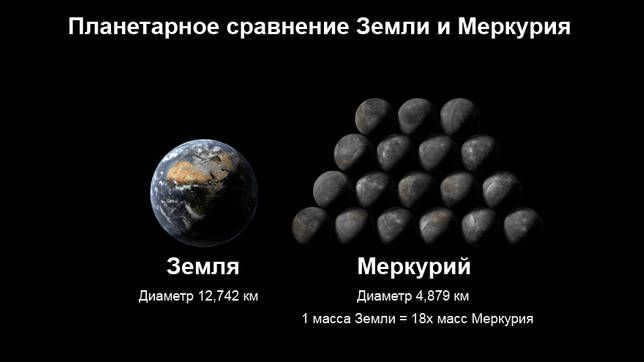
Not too long ago, Pluto was recognized as the tiniest planet in the Solar System. However, in 2006, it was demoted from its position as a full-fledged planet to that of a dwarf planet. As a result, the smallest planet in the Solar System is now Mercury. It orbits the Sun in the closest orbit and completes a full revolution in just 88 days.
All planets can be classified into two categories: rocky planets, such as our own Earth, and gas planets, which encompass the massive giants Jupiter, Saturn, Uranus, and Neptune. The former are referred to as terrestrial planets and include Mercury, Venus, Earth, and Mars – all of which have solid surfaces unlike the gas giants.
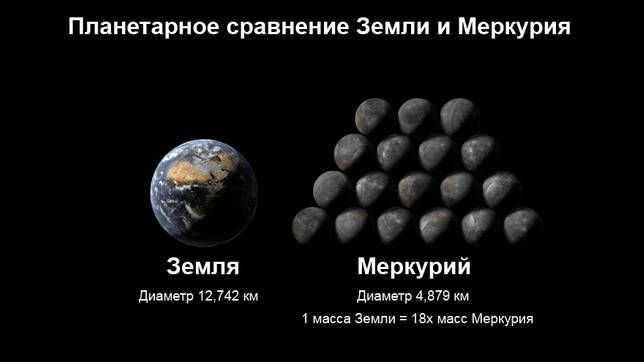
Comparison of Mercury and Earth
Mercury, with a radius of only 2,440 km (0.38 Earth’s radius), is a nearly spherical celestial body. While it is smaller than the satellites Ganymede and Titan, it surpasses them in terms of mass. Mercury has a mass of 3.33 x 10
Density and volume of the smallest planet in the solar system
Mercury has a density of 5.427 g/cm.
As the second smallest planet in the solar system, after Earth, Mercury experiences a gravity of 3.7 meters per second.
This is approximately 38% of Earth’s gravity. In terms of volume, Mercury has a volume of 6.083 x 10
(0.056 Earth’s), meaning that you could fit 20 Mercury planets into one Earth.
Composition and Structure of the Smallest Planet in the Solar System
Mercury is similar to Earth in terms of its composition, consisting of a combination of silicate materials and metals. The planet is composed of a metallic core, silicate mantle, and crust. However, the core of Mercury is much larger, with a radius of 1800 km, making up 42% of the planet’s total volume. The structure and makeup of Mercury are detailed below.
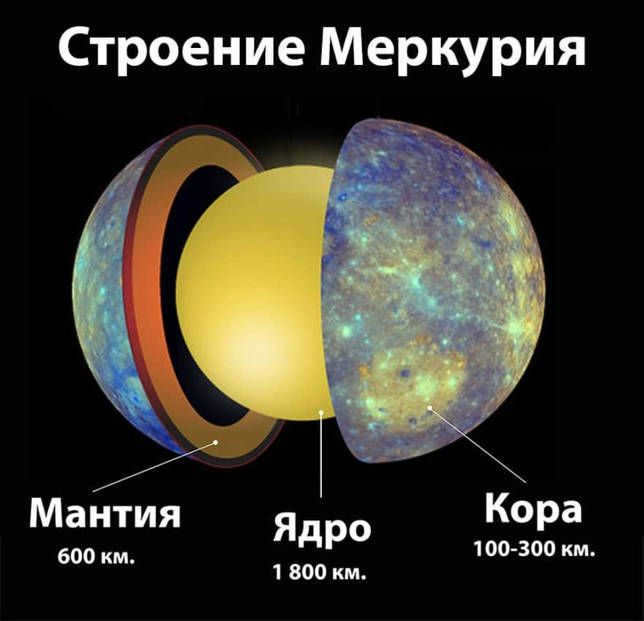

The structure of Mercury’s interior is comprised of the crust, mantle, and core.
Furthermore, the core contains a high concentration of iron. It is hypothesized that the planet was once much larger, but a powerful impact erased its outer layers. Following the core is the mantle, which is composed of silicate material and has a thickness of 500-700 km. The crust, which is 100-300 km thick, is located on top.
Yes, Mercury may be the smallest planet in the solar system, but it surpasses the others in terms of density and temperature.
- Planetoids;
- Planetesimals;
- Protoplanets;
- Nemesis;
- Double planet;
- Mesoplanet;
- Planetary;
- Planemo;
- Did you know that there are some fascinating facts about planets in our solar system?
- Have you ever wondered which planet is the smallest?
- Did you know that there is a planet in our solar system that is the largest?
- Would you like to know which planet is the most distant from the Sun?
- Have you ever wondered which planet is the closest to Earth?
- Did you know that there is a planet in our solar system that is the hottest?
- Have you ever wondered about the orbits of planets in our solar system?
- Did you know that each planet in our solar system has its own unique dimensions?
- Have you ever wondered about the diameter of each planet in our solar system?
- Do you know how many planets there are in our solar system?
- Would you like to know the order of the planets in our solar system?
- Did you know that there used to be some former planets in our solar system?
Mercury: A Planet of Contrasts and Extremes
Mercury, the smallest planet in our solar system, is known for its unique characteristics and contradictions. One of the most notable features is its diffuse atmosphere, which is practically nonexistent. Scientists attribute this to Mercury’s close proximity to the Sun, as the intense heat prevents the planet from retaining an atmosphere. However, it does have a thin exosphere composed of hydrogen, helium, oxygen, calcium, potassium, and sodium.
The absence of a substantial atmosphere on Mercury leads to extreme temperature fluctuations. The planet can approach the Sun as close as 46 million kilometers and move as far as 70 million kilometers away. As a result, the temperature differentials are astonishing: during the day, the air can reach scorching temperatures of +427 °C, while at night, it plummets to a frigid -170 °C. The planet’s surface is marred with craters and also contains a significant amount of ice within them.
A layer of regolith covers kilograms of ice.
Contradictions and extremes
Mercury lacks a significant atmosphere due to its proximity to the sun. However, astronomers believe that there is a thin layer of exosphere containing various substances:
When considering the question of the smallest planet, it is important to examine other characteristics of Mercury. The absence of a substantial atmosphere causes temperatures to change rapidly. Additionally, this small planet can approach the sun as closely as 46,000,000 km and be as far as 70,000,000 km away from it at the same time.
Due to this fact, there are significant disparities: during the daytime, the air mass heats up to a scorching +427 degrees, while at night it plummets to a bone-chilling -170 Celsius. The surface of the planet is ablaze with a fiery red hue. It is adorned with numerous craters. Furthermore, there exists a substantial amount of ice, measuring an astounding 10^15 km. This icy expanse is veiled by a layer of regolith.
The exploration of the planet through the utilization of the space interplanetary station has only occurred on two occasions. As a result, it has yielded dependable data regarding the precise composition of the celestial object:
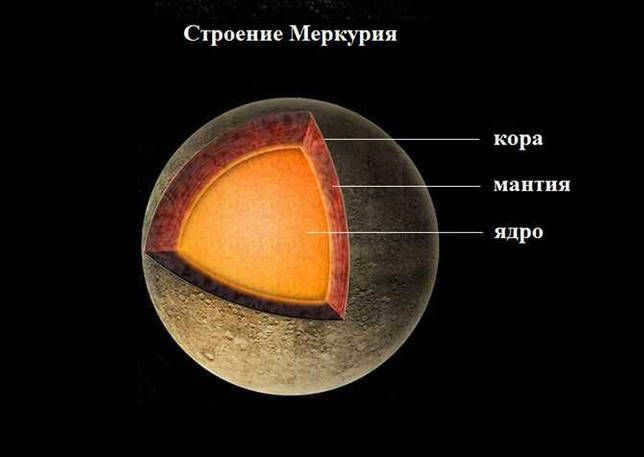
- It has a core made up of metal. This celestial object possesses a relatively substantial core composed primarily of iron and nickel. The mass of the core accounts for approximately 70% of the overall weight.
- Mantle. The shell’s thickness surpasses 600 kilometers.
- Crust. The final layer’s width exceeds 100 kilometers.
An enigmatic world full of secrets and enigmas
During the twilight hours, or in the early morning, the elusive planet Mercury appears or vanishes in the expansive sky. Scientists humorously refer to it as a celestial body that enjoys a game of “hide and seek”. Due to its eccentric orbit, as well as its close proximity to a luminous star, this enigmatic planet is not always within reach of scientific observation.
There is a scarcity of reliable information surrounding Mercury, but with the aid of advanced modern technology, it is possible that scientists will soon uncover all the mysteries that have thus far remained undisclosed!
Interesting Trivia
Mercury, like Saturn, Venus, Mars, and Jupiter, can be observed in the evening and morning sky without the need for special equipment. The question of which planet is the smallest is now answered. Let’s now explore some of its unique features:
- Mercury completes one revolution around the Sun in just 88 days, making it the fastest planet in our solar system;
- Despite its short year, a day on Mercury lasts a relatively long 176 days;
- The planet is characterized by rugged escarpments that form due to the cooling and compression of its iron-rich surface, creating wrinkles that can be hundreds of kilometers high;
- Mercury exhibits slight variations in its magnetic fields, which are considered to be different at the north and south poles;
- Hydrogen geysers can be found on the surface of Mercury. These geysers erupt occasionally due to the heightened activity of the rocky surface.
The question regarding the smallest planet in the solar system has been answered. Now, let us delve into the intricacies of its composition.
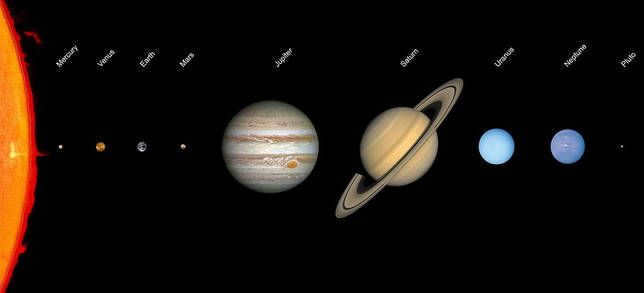
Unique Characteristics
The interplanetary expedition that was sent to Mercury was only successful on two occasions. Nevertheless, scientists managed to gather a wealth of reliable information about the distinctive features of this celestial body.
- The metallic core is of significant size and contains a combination of nickel and iron. It constitutes approximately 70% of the planet’s total mass.
- The mantle, which is the layer surrounding the core, has a thickness exceeding 600 km.
- The crust, the outermost layer, measures over 100 km in width.
It is now evident which planet in the solar system holds the title of being the smallest. Despite its diminutive size, Mercury has undergone extensive study, resulting in a comprehensive understanding of its unique characteristics.
Temperature Fluctuations Set New Records
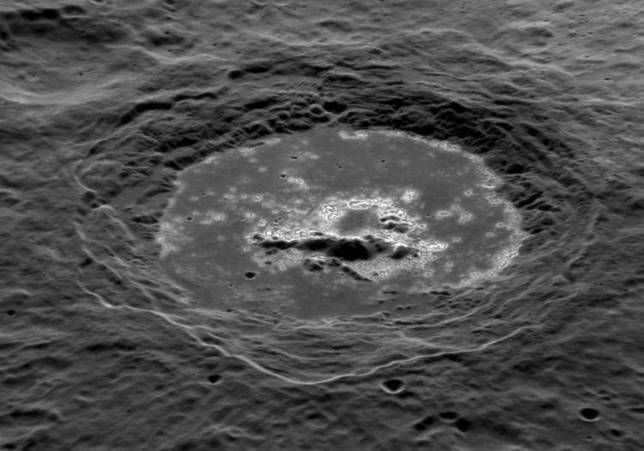
Warhol Crater Photograph
This particular celestial body, known as the smallest planet in our solar system, exhibits the most extreme temperature fluctuations among all other planets within the system. This unique characteristic can be attributed to its proximity to our Sun, its lack of atmosphere, and its relatively slow rotation. During the day, the average surface temperature soars to approximately 350°C above zero, while at night it plunges to around 170°C below zero. The lowest recorded temperature on this planet, named Mercury, is -183°C, while the highest temperature, observed during midday at specific longitudes when the planet is closest to the Sun, reaches an astonishing +427°C. Despite these harsh conditions, contemporary scientists have proposed the existence of ice on the surface of Mercury.
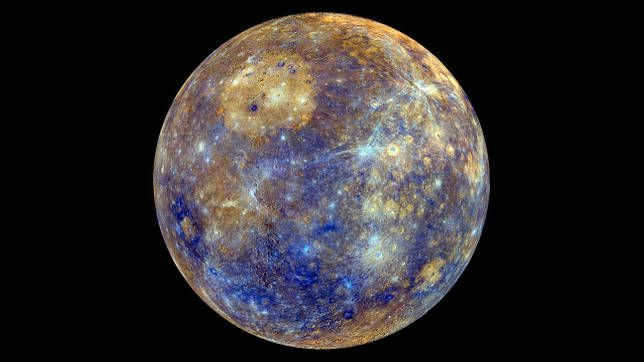
Mercury, the tiniest planet in the Earth group, also holds the title for having the smallest circumference. With a circumference of only 4879.4±1.0 km, it is even smaller than Ganymede, a moon of Jupiter, and Titan, a moon of Saturn. However, despite its small size, Mercury’s massive core allows it to surpass these moons of giant planets in terms of mass, which is 3.3 × 10 to the 23rd degree kg. The average density of Mercury, despite being relatively small, is slightly lower than that of Earth, which is much larger, and measures 5.43 g/cm³. This suggests that Mercury has a high concentration of metals in its interior.
Disproving the existence of a metallic core in Mercury
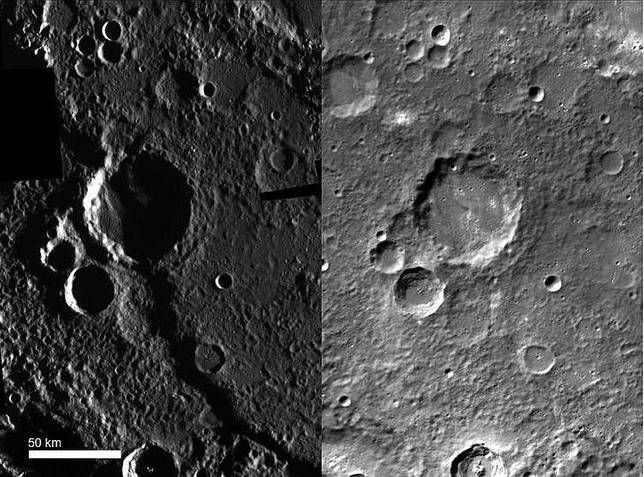
There is an intriguing discovery when it comes to the Canyon on Mercury. The illumination brings to light surprising details.
Not long ago, the scientific community held the belief that Mercury was composed of a metallic core with a radius of approximately 1900 km, situated in the planet’s interior and accounting for 60% of its total mass. Additionally, it was thought that the surface of this core was covered by a silicate shell with a thickness of around 600 km. These assumptions were made based on the observation of a very weak magnetic field, leading to the conclusion that a planet of such small size could not possess a liquid core.
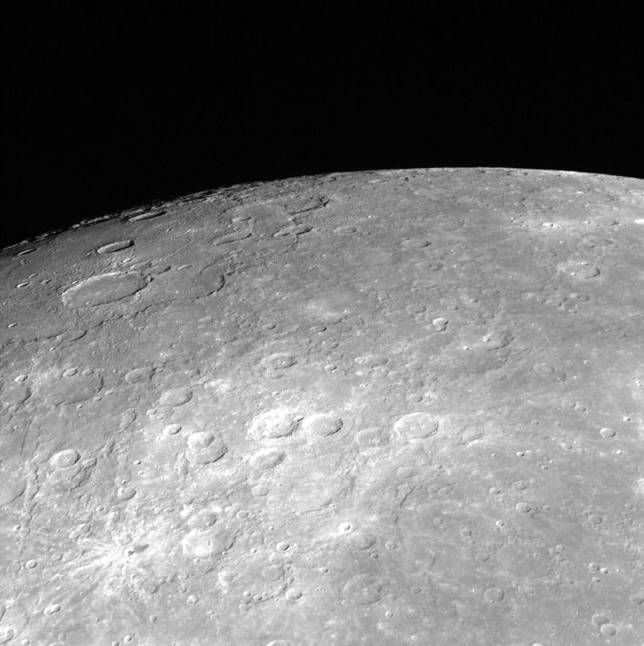
However, in 2007, a team of prominent astronomers, led by Jean-Luc Margot, challenged this theory after conducting a thorough analysis of five years’ worth of radar observations of Mercury. They discovered significant variations in its rotation, which were unexpected for a planet with a solid core.
Here is a popular science film about Mercury produced by the European Space Agency:
| Dwarf planets | Pluto, Ceres, Haumea, Makemake, Eridus. |
| Terrestrial planets | Mercury, Venus, Earth, Mars |
| Gas giants | Jupiter, Saturn, Uranus, Neptune. |
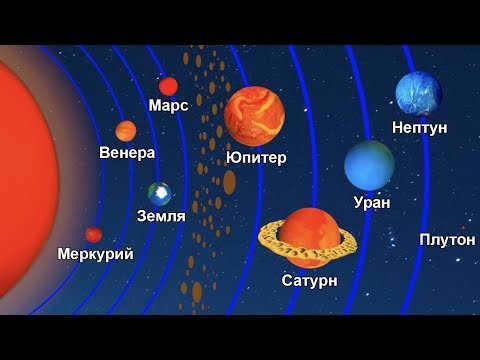
As of today’s date (May 14, 2021), NASA has officially verified the existence of 4,383 exoplanets. These are planets that exist beyond our solar system. While this number may appear significant, it pales in comparison to the vastness of the Milky Way, which is estimated to host around 400 billion stars. In reality, we have only scratched the surface of what lies beyond.
Furthermore, if we consider the likelihood that each of these stars harbors at least one orbiting planet, our current knowledge only encompasses a mere 0.0000008% of the total planetary population within our own galaxy. And let’s not forget that the Milky Way is just one out of the estimated 2 million galaxies in the cosmos. The sheer magnitude of potential worlds in the universe is truly mind-boggling.
However, out of the 4,383 planets located beyond our solar system, there exist celestial bodies that appear to challenge the fundamental principles of physics and our understanding of astronomy. These planets are exceptionally peculiar, ranging from extreme and massive to diminutive in size.
Come along on this expedition through the vast expanse of the Milky Way galaxy as we unveil the tiniest planets known to humanity. Get a glimpse of the most minuscule planets in the entire universe, culminating with Kepler-37b, currently holding the title for the smallest known planet.
What are the tiniest planets in existence?
Mercury holds the title for being the smallest planet in the entire solar system. With a diameter of 4,879 kilometers, it is three times smaller than Earth. It is worth noting that even Ganymede, which is a moon of Jupiter and happens to be the largest satellite in the solar system, has a diameter of 5,268 kilometers, making it larger than Mercury. Keep this in mind as we delve into the details.
We have compiled a list ranking the planets in order of size, from largest to smallest. For each planet, we will include its respective diameter. Now, without any further delay, let us embark on our cosmic expedition to explore the tiniest worlds in the universe.
10. Kepler-42d: 7250 km.
Kepler-42d is an exoplanet situated 126 light-years away from our planet in the constellation Cygnus, orbiting Kepler-42, a red dwarf star that constitutes a system with three diminutive planets. Among them, Kepler-42d holds the distinction of being the tiniest. This celestial body was first detected in 2012 and continues to rank among the ten smallest planets known to us.
Kepler-42d boasts a radius 0.57 times larger than that of Earth. Moreover, it exists in close proximity to its parent star, at a mere distance of 0.015 astronomical units. (To put things into perspective, one astronomical unit is equivalent to the average distance from Earth to the Sun, which amounts to approximately 149.5 million kilometers.) This close proximity enables Kepler-42d to complete a full revolution around its star in a mere 1.87 days, resulting in an average temperature of 175 degrees Celsius.
9. Kepler-444e: 6,957 kilometers.
Kepler-444e is situated 117 light years away from our planet in the Lyra constellation. It orbits around Kepler-444, a star that is 11 billion years old and is part of a triple system, along with two closely located red dwarfs. This star has a planetary system consisting of five planets, with Kepler-444e being one of them. It was discovered in 2015.
This planetary system is unique as it has planets that are similar in size to the oldest Earth that we know of. What makes it even more fascinating is that its star formed when the universe was only 20% of its current age. Kepler-444e has a diameter of 6,957 kilometers, making it the ninth largest planet that has been found so far. It completes one revolution around its star in just 7 and a half days.
8. Kepler-62c: 6,880 kilometers.
Our expedition through the Milky Way continues as we come across Kepler-62c, a planet situated 1200 light years away from Earth. Kepler-62c orbits around its star, Kepler-62, which is slightly smaller and cooler than our Sun. This star is part of a planetary system consisting of five planets, two of which are located within the habitable zone.
Discovered in 2013, Kepler-62c is an uninhabited planet that shares a similar size to Mars, measuring approximately 6,880 kilometers in diameter. It completes its orbit around its star at a distance of 0.092 astronomical units (a.u.), which is closer than Mercury’s orbit around the Sun at 0.38 a.u. As a result, Kepler-62c completes a full revolution in just 12 and a half days.
7. Mars: 6,779 kilometers.
Our neighboring planet, Mars, is the seventh largest discovered planet in the universe. It is about half the size of Earth and is known as the red planet. Mars is the fourth planet in the solar system and is located 227.9 million kilometers away from the Sun. It takes Mars 687 days to complete one revolution around the Sun.
Mars has an atmosphere that is 96% carbon dioxide and lacks oxygen. The planet’s surface is predominantly made up of oxidized iron minerals, which gives it its distinctive reddish hue. Scientists are currently conducting missions to explore the possibility of establishing a human colony on Mars.
6. Kepler-444d: 6,573 kilometers.
Kepler-444d is a planet that was found in 2015 and, like its companion Kepler-444e, orbits around the star Kepler-444. It has a size that is 0.53 times the size of Earth. With a diameter of 6,573 kilometers, it is the sixth largest planet that has been discovered so far.
Among the five small rocky planets in this system, Kepler-444d is the third largest (exceeding c and b, which we will discuss below), and it is situated so close to its star that it completes one orbit around it in just 6 days.
5. Kepler-444c: 6,332 km.
Within the same Kepler-444 system, we have identified another remarkable planet. Kepler-444c, discovered in 2015, has a size that is approximately 0.497 times that of Earth. With a diameter of 6,332 kilometers, it ranks as the fifth largest planet ever found.
Kepler-444c is a rocky planet situated in such close proximity to its star that it completes a full orbit in just 4 and a half days. The only planet smaller than Kepler-444c within the Kepler-444 system is Kepler-444b.
4. Kepler-102b: 5,989 kilometers.
We have reached the fourth largest planet in the Universe. Kepler-102b is a planet that was discovered in 2014 and it revolves around Kepler-102, a red dwarf that is part of a binary star system. Both red dwarfs are situated between 591 and 627 a.u. away.
Kepler-102b is one of the five planets that orbit this star, which is located in the constellation Lyra. It has a radius that is 0.47 times that of Earth, making it one of the smallest worlds ever discovered, with a diameter of 5,989 km. It completes one orbit around its star in just 5 days.
3. Kepler-444b: 5,097 kilometers.
In the top 3 now, we have come across the most minuscule planets ever found. Kepler-444b stands as the tiniest among all the (already small) rocky planets that encircle the peculiar star, Kepler-444.
Kepler-444b is positioned closest to its parent star, completing one full revolution in a mere 3 and a half days. With a radius 0.4 times that of Earth, this planet has a diameter of merely 5097 km, making it the third largest planet that has been discovered thus far.
2. Mercury: 4879 kilometers
Indeed. Mercury holds the distinction of being the second tiniest planet ever identified, highlighting the challenges in detecting the most minuscule planets in the galaxy. Clearly, Mercury does not rank second in terms of size among all planets in the galaxy. The issue lies in our limited ability to locate such diminutive celestial bodies beyond our solar system.
Nevertheless, at present, based on our verified knowledge, Mercury stands as the second smallest planet that has been discovered. It occupies the closest orbit to the Sun and appears to be the smallest planet within our solar system.
The radius of Mercury is 0.38 times that of the Earth. This means that it has a diameter of 4,879 kilometers. Mercury is located 57.9 million kilometers away from the Sun, and it takes 88 days for it to complete one revolution around the Sun. Unlike Earth, Mercury does not have any natural satellites orbiting around it. This is most likely due to its small mass, which is only 0.06 times the mass of Earth. However, the surface of Mercury does bear similarities to that of our Moon.
The rotation of Mercury is incredibly slow, taking 58 days for it to complete a full rotation. As a result, temperatures on the side of the planet facing the Sun can reach as high as 467°C, while the temperatures on the “night” side can drop to as low as -180°C. This makes Mercury not only a small planet but also an extreme one.





